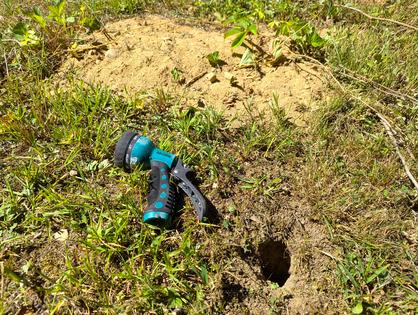Ask the Builder: Dealing with chipmunks, mice and other varmints
You and I share the planet with lots of other creatures. Quite a few of them can be very problematic. A year ago, I shared with you how chipmunks had ruined my patio made with concrete pavers. The fuzzy brown pests created a maze of tunnels under the stones, causing them to tilt and rock when you walk on them.
Mice, chipmunks, birds, and all sorts of insects can make your day go from bad to worse. I live in central New Hampshire, where mice do everything possible to cohabitate in just about every house. All those cartoons and children’s books featuring harmless mice who live behind the walls and up in the ceilings are based on fact.
Mice can be very destructive. Two years ago, a mouse chewed through a water line in my home. It created a pinhole leak that caused just under $40,000 of damage to my home. It was extremely disruptive as we had to move out of our entire first floor to have all the wood floors refinished.
Mice love to chew fabrics, clothes and upholstery. They use the fibers to make cozy nests. I’ve discovered that mothballs do a very good job of repelling mice from items stored in my attic. The issue is that you have to replenish the mothballs from time to time.
Several days ago, a good friend reached out to me. He had his blacktop drive replaced a year ago. The old blacktop was removed and new put down. A chipmunk had created a nest under the old driveway. My friend thought he would fill the hole with small rocks before the new blacktop was installed.
This plan failed. He sent me a photo showing a 2-inch diameter hole in his new blacktop driveway just above the nest location. The blacktop immediately surrounding the hole was sagging down toward the hole. You can imagine how upset he was.
Here are the instructions I gave him:
First, carefully chip away the blacktop to enlarge the hole. It’s important to eliminate the sagging depression. Water puddling on the blacktop will cause future problems.
Then get a bag of Portland cement and some fine sand. These materials will be used to create a slurry that will be poured into the nest opening.
The slurry is made by mixing one measure of Portland cement with two measures of sand. Blend these together dry until the color is uniform. Then add enough water to make the slurry the consistency of a watery applesauce.
Using a large-mouthed funnel, pour the slurry into the nest. You’ll be stunned by how much slurry it might consume. Chipmunks are industrious and clever builders. The nests are convoluted to protect them from predators and the elements. A thick slurry will not penetrate deep enough into the nest.
Be aware that the chipmunk nest will have no fewer than two entrances/exits. Try to locate all the openings and pour the cement slurry into them as well.
The chipmunks are determined, and they will remove rocks you stuff into the holes you see in your yard. They won’t be able to remove the hardened cement slurry.
That said, it’s possible the critters will just get back to work and create new entrances and exits. You need to understand that you’re in a war, and the tiny pests have a very strong survival instinct. They will not be waving a tiny white flag anytime soon.
I’ve tried to flood the chipmunk lairs by putting my garden hose into the holes. Much to my surprise, the water rarely fills up the nest and overflows out of the holes. I’m astonished by how many gallons of water disappear into the soil.
I’m not a fan of using poison. The poison can enter the aquifer and then seep into my well. It can also poison things I don’t want to harm. I suggest you adopt the same strategy and shy away from toxic brews that might have unintended consequences.
You might also adopt a live-and-let-live policy. Try to adapt. Channel Mother Nature. Do some research and discover the predators one link up the food chain that love to feast on tender chipmunks. You might start doing things to attract these animals to your yard.
Hawks, owls, serpents, etc., might become your new friends as you wage war against the furry mammals that skitter across the grass like an all-star soccer player!
Subscribe to Tim’s FREE newsletter at AsktheBuilder.com. Tim offers phone coaching calls if you get stuck during a DIY job. Go here: go.askthebuilder.com/coaching
©2025 Tim Carter. Distributed by Tribune Content Agency, LLC.






























Comments